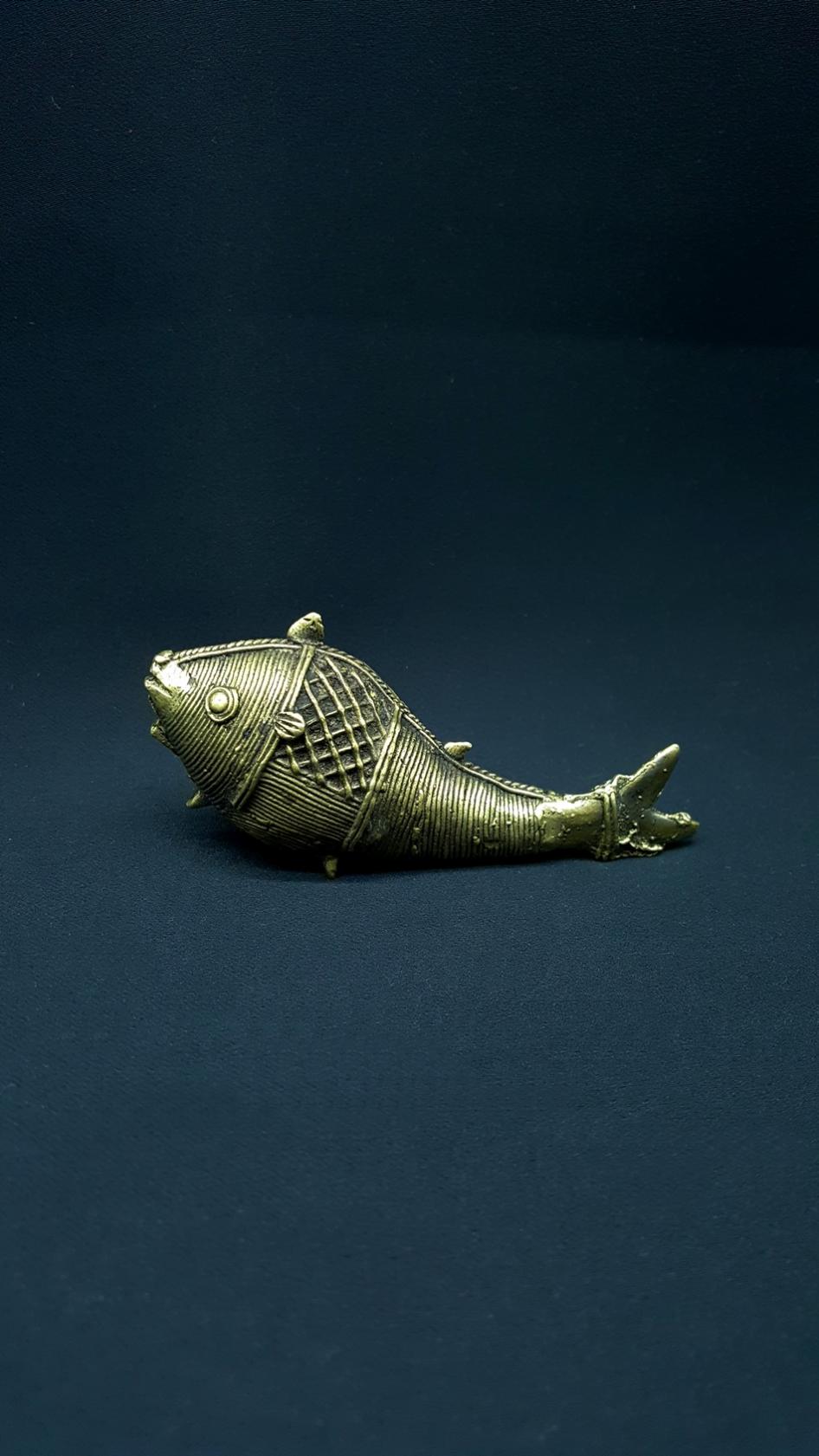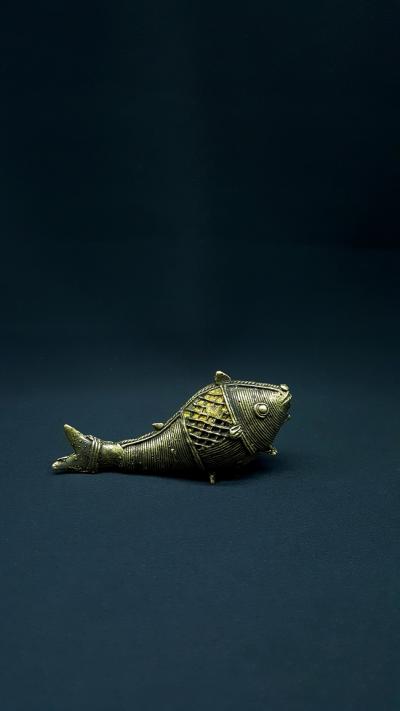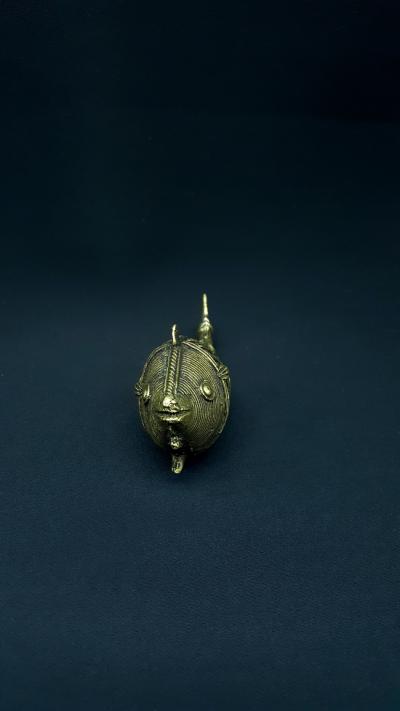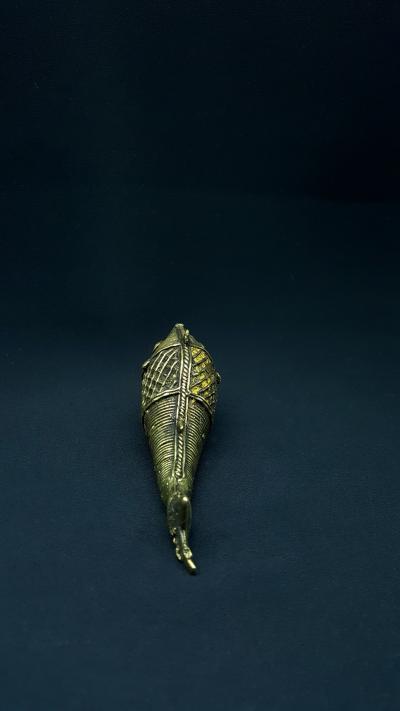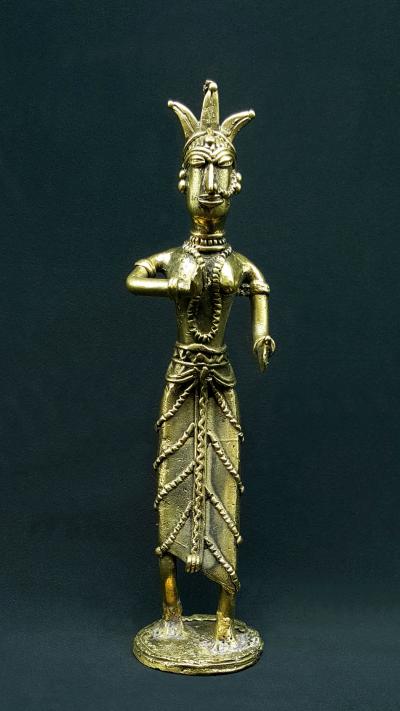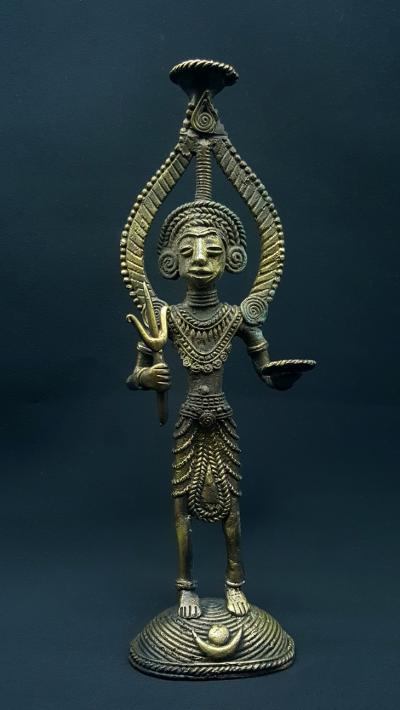Statue Le poisson superbe
Fertilité et renaissance
€85.00
Statue tribale en laiton de l’Inde du Sud représentant un superbe poisson : fertilité, purification, renaissance et régénération. En savoir plus...
Hauteur : 11 cm
Poids : 0,100 Kg
Art tribal
Cire perdue
Origine : Odisha - Inde
Livraison gratuite UE, Norvège et Suisse
Description
L'art tribal
Les tribus, pratiquant l'art Dokra, sont originaires de la région de Bastar, dans l'Inde du Sud (aujourd'hui situé dans l'État de Chattisgarh), elles ont émigré plusieurs siècles auparavant et se sont installées un peu partout en Inde du Nord au Sud.
La plupart ont gardé leur tradition (art culinaire, vestimentaire, fêtes-) et leur religion animiste.
L'art Dokra
Cet art traditionnel et artisanal n’a pas changé depuis des millénaires (+ de 4000 ans) et la technique utilisée est toujours celle de la cire perdue : un modèle grossier en argile est réalisé puis recouvert de cire par l’artiste qui va lui donner sa forme définitive avec ses détails. L’ensemble est à nouveau recouvert d’un mélange argileux puis chauffé dans un foyer ouvert où un alliage cuivreux sera coulé. Voir Blog.
Les objets produits par les artistes Dokra peuvent être de nature usuels : coupelle, bougeoir… des instruments de musiques (cuivres), ou bien artistiques tels que des bijoux, des animaux : chevaux, éléphants, tortues…, ou encore des statues d’hommes et femmes représentant des scènes de vies quotidiennes et des divinités hindous adoptées par les tribus : Ganesh, Lakshmi, …
Le poisson Délicate statuette d’un poisson avec son corps richement décoré de motifs géométriques souvent utilisés dans l’art Dokra.
Les Dokras représentent avant tout les éléments de la nature qui les entoure : le poisson, symbole de vie, joue ainsi un grand rôle dans leur alimentation.
Le poisson figure la fertilité, la purification, la renaissance et la régénération.
Par ailleurs, dans l’hindhouisme Matsya Vishnou, est le 2° avatar (incarnation)de Vishnou : c’est le poisson, sauveur du déluge et des Vedas. Il existe plusieurs récits concernant la venue de Matsya : l’une d’elles raconte que Manu, considéré comme le premier humain sur Terre (tel Adam) trouva un petit poisson : celui ci lui demanda de le protéger lui indiquant qu’il le sauverait du déluge bien des années plus tard. Manu veilla alors sur Matsya qui grandit et pris une telle place que seul l’océan pouvait le contenir. Le temps venu, tel Noé, Manu construisit un bateau, y logea les sages, les plantes et les animaux. C’est ainsi que Vishnou sauva l’humanité mais aussi les Védas que le démon Haryagrîva avait caché dans l’océan.
L’harmonie avec la nature tient une place primordiale chez les tribus animistes en Inde qui ne peuvent concevoir la nature comme leur appartenant. Ils forment un tout avec elle et cette sculpture marque bien ce lien fort.
